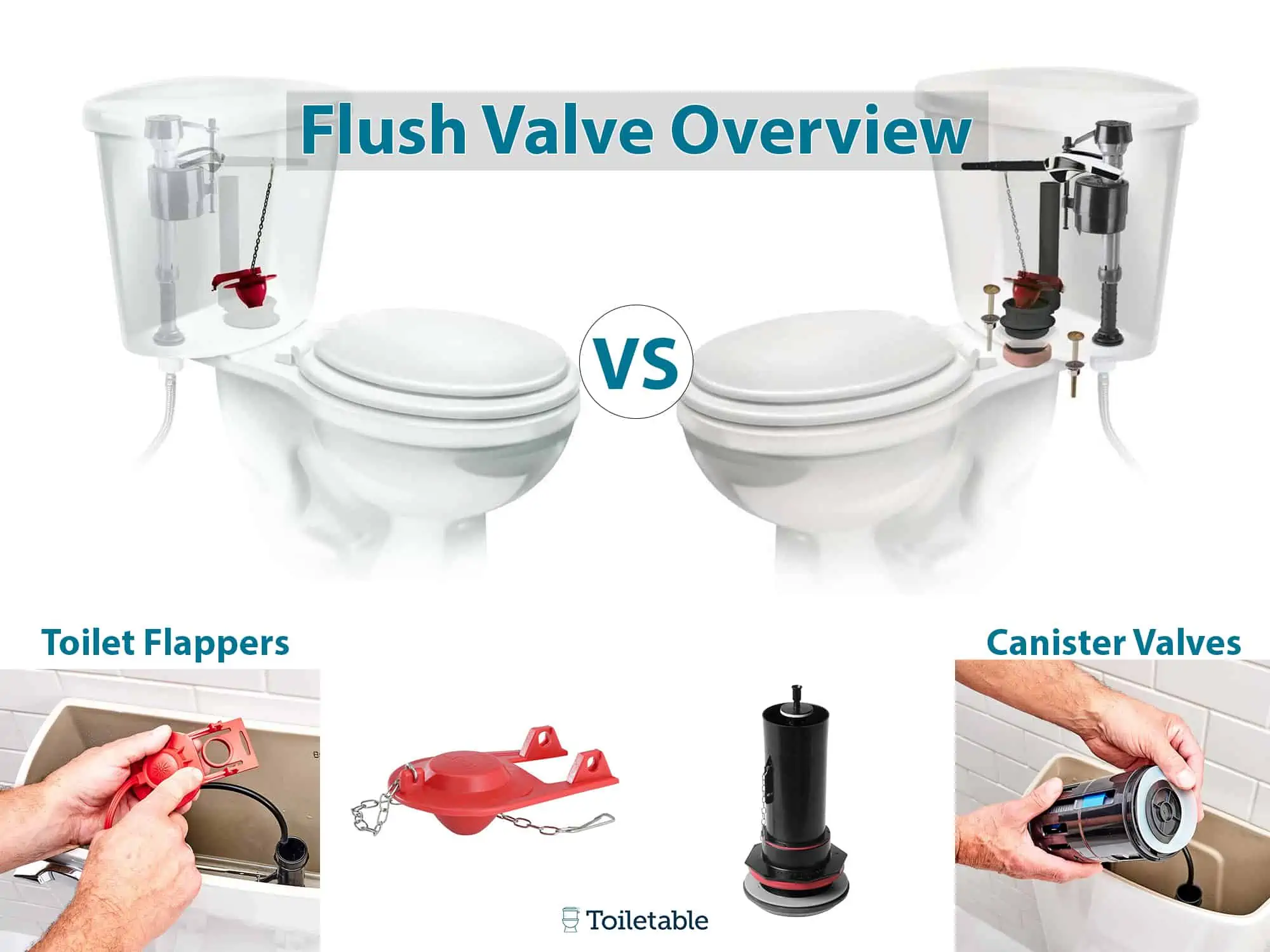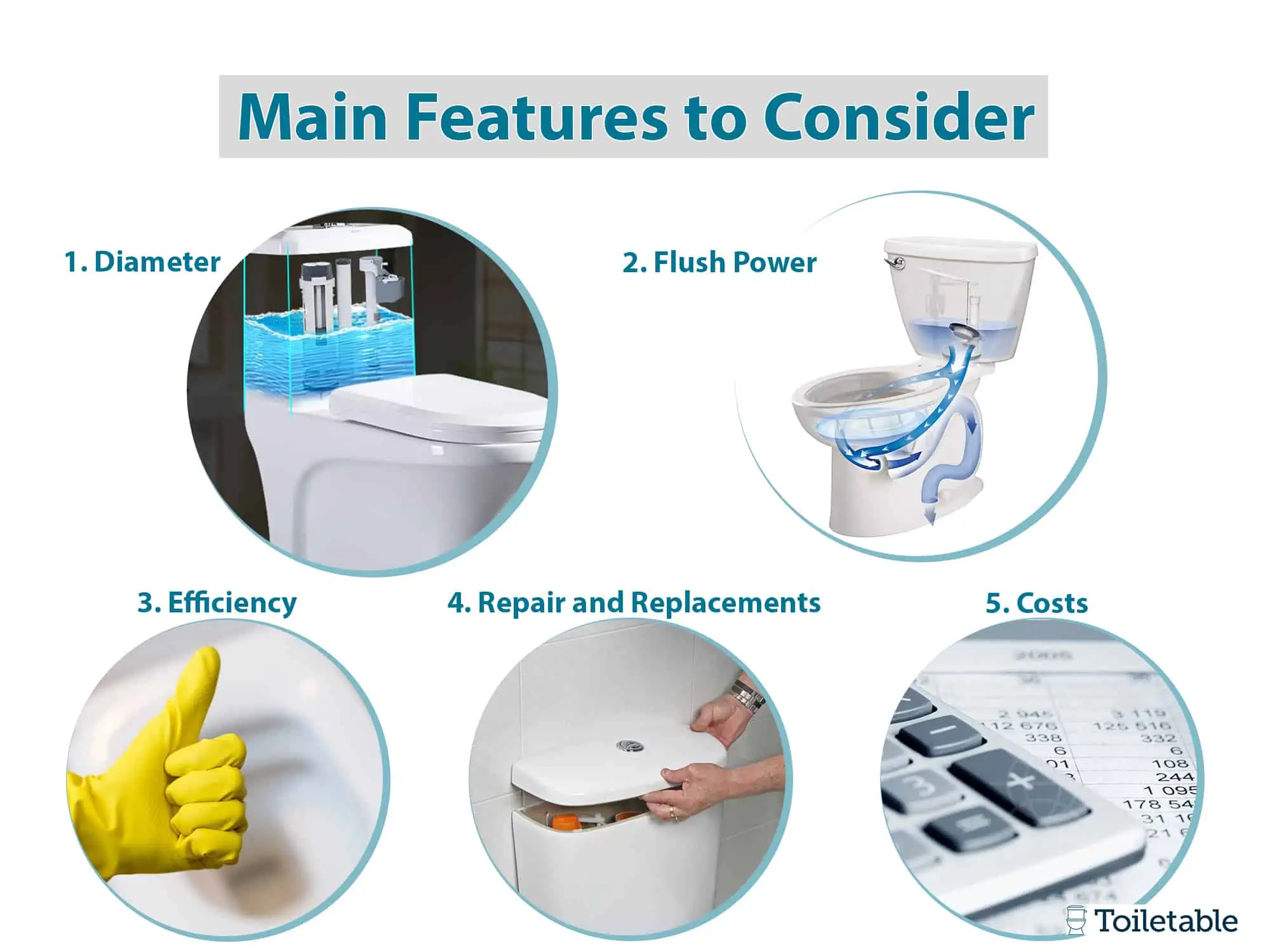If you want to buy a new toilet, you might need to decide whether you want a unit with a canister flush valve or with a flapper. Since these are among the most important parts of the toilet, we will go through everything you need to know about these parts. In the end, both parts have their pros and cons, so the final choice will depend on your preferences.
Flush Valve Overview
A flush valve is an important part of the toilet, located in the toilet tank. When you press the flush lever, the valve lets the water flow to the bowl, causing the flush. Flush valves can be either a flapper or a canister style.

Toilet Flappers

Toilet flappers can usually be found in older toilets. Flappers are mostly made of rubber or plastic, and they sit in the tank preventing water from going down to the bowl. The flapper is attached to a chain that is directly connected to the flush lever. When you push the lever, it pulls the chain and the flapper pulls up, allowing water to release from the tank and activate the flush.
Canister Valves

Toilets that have canister flush valves usually have a long, vertically-positioned cylindrical valve in the tank. When you push the lever, the valve goes up and releases water from the tank. They are usually large and force the water down with amazing power.
However, they are also complicated and require lots of tiny components to work. Despite many components, canister flush valves require almost no maintenance and can last for a long period of time.
Advantages and Disadvantages
Regardless of which you choose, both flush valve options have pros and cons. Let’s take a look at the main upsides and downsides of both systems.
Canister Flush Valve – Pros & Cons

Toilet Flapper – Pros & Cons

Main Features to Consider
Now that you know the main differences between the canister valve and the flapper, let’s go a bit more into the details.
Here we list five important features to consider when choosing you next flapper or canister flush valve.

1. Diameter
Basically, the longer the diameter, the more water gets released from the tank, which directly results in a more powerful flush. For example, a flapper usually has a diameter of two inches (on rare occasions, models can go up to 2.5 inches). By comparison, canister valves usually have a three-inch diameter, which can sometimes go up to 3.5 inches in high-end models. Thanks to their larger diameter, canister valves can release water at a faster rate.
2. Flush Power
When it comes to flushing power, consider two aspects: the size and the shape of the trapway. In most cases, if the trapway is bigger, the toilet will have a more powerful flush. Like with the diameter, canister flush valves usually have a larger trapway, which is often the case with newer toilets. Flappers have smaller trapways, but in the end, the smaller trapway doesn’t have a huge negative impact on their performance.
3. Efficiency
After testing many models, we can conclude that canister valves and flappers are both efficient. However, there is one detail to note: while systems with flappers can have only one type of flush, systems with canister valves can have two different types of flushes. These dual-flush toilets allow you to choose a flush intensity based on your need to dispose of either liquid or solid waste. It might not seem like a big difference, but having these options can easily save you money in the long term.
4. Repair and Replacements
No matter if you choose a toilet with a flapper or with a canister valve, they both tend to wear down over time. Flappers are much easier to break, but unlike a canister valve, they are also easy to fix. On the other hand, a canister valve is difficult to repair, but it will last longer.
If your flapper breaks, in most cases, you would only need to replace the chain. Rarely would you need to change seals, too. However, a canister valve has a cylinder, a seal, and buttons. No matter the quality of the materials, they all tend to wear eventually.
5. Costs
Regardless of which option you buy, you should always consider potential costs. When it comes to flappers, their mechanisms are pretty simple and don’t have many parts, meaning they’re usually more affordable than canister styes. That being said, always compare between products because the total price could only differ by a small margin.
Our Opinion
What would be your final choice? Obviously, a flapper is easier to repair and is also more affordable – which makes it an ideal choice if you want to shop on a budget. However, if you need power and efficiency, buying a toilet with a canister flush valve would be an excellent long-term investment.
